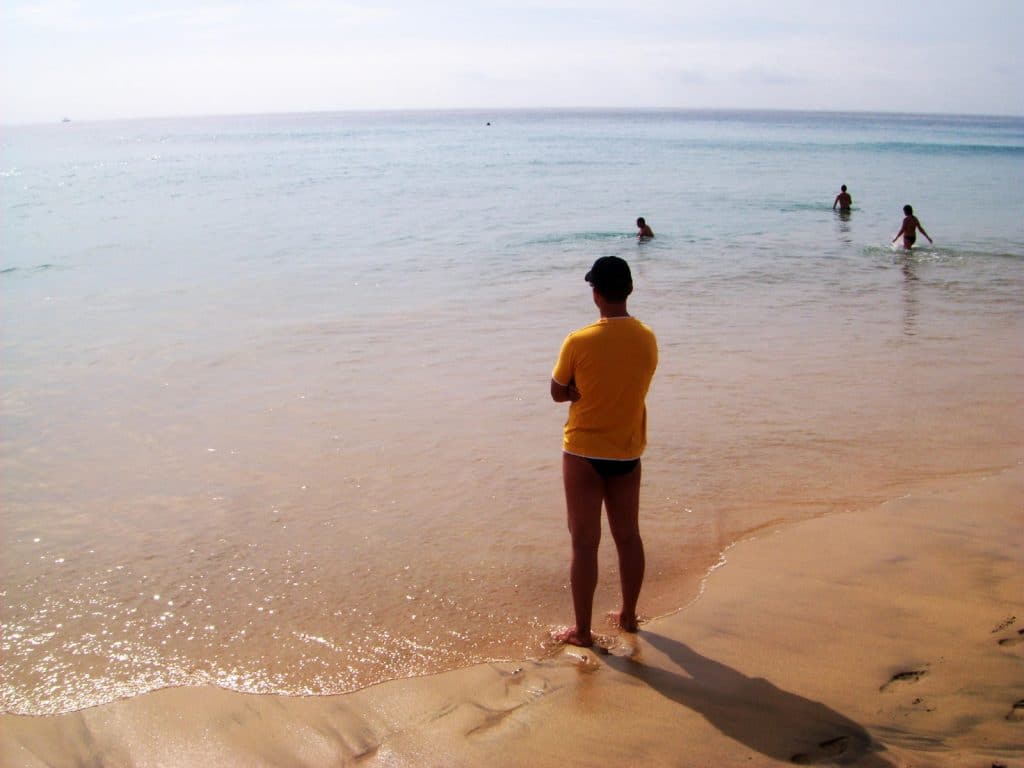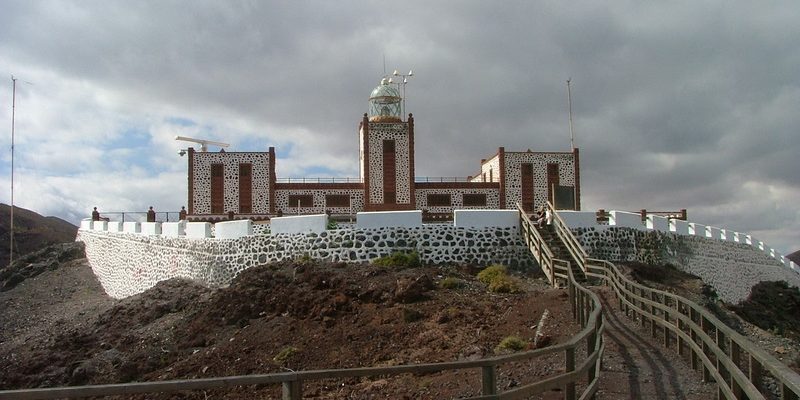The oldest Canary Island is Fuerteventura. The island is located about 100 kilometers off the African mainland in the Atlantic Ocean and is not only very popular with windsurfers and kite surfers.
The Spanish island is a about 100 kilometers long, about 30 kilometers wide and like its neighboring islands of volcanic origin. In the north of the island there are mountains up to 700 meters high, the highest elevation of the island is 807 meters high in the south on the peninsula Jandía. It is noticeable that the island has no elevation in the middle.
The Dunas de Corralejo Nature Park is known for its impressive sand dunes that rise directly from the crystal-clear waters of the Atlantic. This protected area is a habitat for many plant and bird species. In the Parque Natural de Jandía in the south of the island, holidaymakers can experience an impressive variety of flora and fauna, including rare plant species and wild goats. Hikers and nature lovers can explore the volcanic mountains on marked trails and enjoy breathtaking views from the peaks.

Fuerteventura is known for its extensive white sandy beaches and crystal-clear waters. Places like Corralejo and Costa Calma are ideal for sun worshippers and water sports enthusiasts. Surfers, kitesurfers and windsurfers often come to the island because of the ideal wind conditions and excellent waves.
Fuerteventura offers a varied culinary landscape that is strongly influenced by its island location and Spanish culture. Fresh seafood is a speciality of the island, including fish varieties such as dorada (sea bream), cherne (grouper) and the regionally popular vieja (parrotfish). These are often grilled and served with “papas arrugadas” (small potatoes boiled in salt) and “mojo” sauces, a typical Canarian seasoning sauce that comes in green (with coriander or parsley) and red (with red peppers and chilli) varieties.
In addition to seafood, Fuerteventura offers a selection of goat’s cheese, which is very popular on the island and is used in many traditional dishes. Cheese production is an important part of local agriculture, and Fuerteventura’s goat’s cheese is known for its creamy flavour and high quality.
Fuerteventura vacations – our tips
Besides a lot of recreation on the beach we also made some smaller excursions on the island.

When I think back to our time on Fuerteventura, pretty much the only things that come to mind are the beach and the sun. Back then we did relatively little on the island, but sometimes you just need to be lazy. There is one excursion though that I remember well.

Fuerteventura visitors should not pass up the opportunity to see the saline near Caleta de Fuste. The tiny village Las Salinas and its Museo del Sal paint an impressive picture of the history of salt production on the island.
Find your adventure
Book your stay
Travel information about Fuerteventura
Arrival
by plane
Most tourists arrive on Fuerteventura by plane. The international airport is located just south of the island’s capital, Puerto del Rosario.
There is only one runway and the airport is quite clear.
by ship
The island can of course also be reached by boat. There are ferries between the Canary Islands.
On the way...
by car
The road network on the island is well developed. Numerous car rental companies offer rental cars. Some touristic highlights can only be reached on quite bumpy gravel roads. Rental car companies forbid to drive to these places with their “normal cars”, you have to rent an off-road vehicle. Who nevertheless uses the gravel roads with a normal rental car, loses the insurance protection. In the last years there are real hunters, who take pictures of these “sinners”, give their pictures to the rental car companies and collect commission. The rental companies then keep the drivers’ deposit to cover the vehicle damages (even if there are no obvious damages).
by bus
Individual places are served by buses. The buses are very reliable and the tickets are quite cheap.
by taxi
Taxi rides are quite cheap on Fuerteventura. Short distances can be covered so well. Longer journeys to neighbouring villages are considerably more expensive, so the bus is the cheaper solution.
Best time to travel
On Fuerteventura there are actually no seasons. Snow is said to have never been on the island, the temperatures are very moderate and it never gets too hot.
Many people spend their Fuerteventura vacations on the island in the months from October to December. Here you can escape the cool autumn of the european north and enjoy the warming sun once again.
January is the rainiest time on the island. There can be heavy rainfall.
Windsurfers are mainly attracted to the island in July and August. The wind is quite strong at this time.
Drinkable water
The rainfall on Fuerteventura is quite low. Freshwater is scarce and so the tap water is produced in seawater desalination plants. You should not drink this!